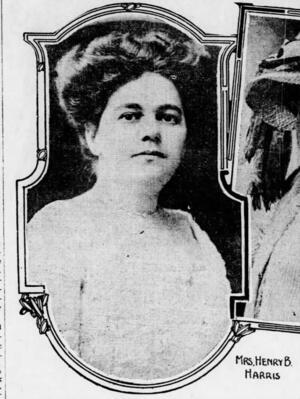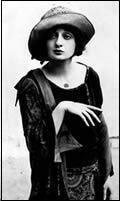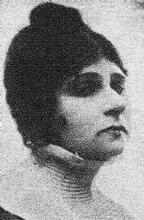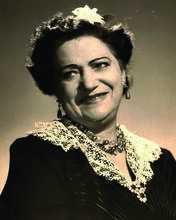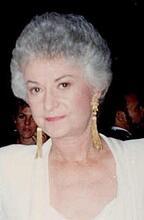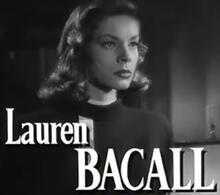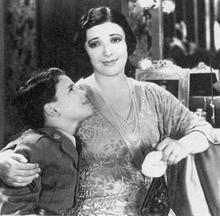Renee Harris
Renee Harris survived tragedy aboard the Titanic to become New York’s first female theater producer. Harris met her husband, theater producer Henry B. Harris, while working as a legal secretary to put herself through law school, and she often read plays and approving scripts for him. She lost him in 1912, during the sinking of the Titanic. Devastated, Harris chose to continue his work in theater, producing her first play, Damaged Goods, in 1913. The play dealt honestly with the taboo topic of syphilis, dispelling myths about the disease. During World War I, Harris also sent performers to Paris, pioneering the tradition of entertaining troops. After her brief period of success, she became bankrupt during the Depression. Despite adversity, she remained feisty to the end.
The Titanic
Renee Harris’s career as New York’s first woman theatrical producer began as a direct result of one of the twentieth century’s most renowned tragedies, the sinking of the Titanic. As she watched the “unsinkable” vessel go down in the icy waters off Newfoundland, the handful of survivors on her lifeboat braced against the fierce cold and the shouts of the fifteen hundred passengers still on board. Among these victims was her husband, successful theatrical manager and producer Henry B. Harris, who had stepped out of the lifeboat at the last minute to make room for women and children.
“I feel as though I had died and that my dear husband’s spirit was in me and I was here to try to do what he would have done.” In these words, taken from her first interview following the disaster, Harris plotted the course of her life in the theater.
Theater Production
Renee Harris had assisted her husband in theatrical matters, such as approving scripts, so she had been somewhat prepared for what was to come. She stepped out of his shadow and became a noted producer in her own right. Indeed, “what he would have done” was what she did. She quickly learned that successful producing meant combining the artistic with the commercial. In her own words, “The successful play must tie up somewhere to the general ideas of the public.”
Harris’s first and most famous production was Damaged Goods, starring Richard Benett. This play dealt with syphilis, a taboo subject in the early twentieth century. It was a huge success, at the same time dispelling myths about the disease and enlightening the general public. Her sense of social responsibility continued throughout her career. During World War I, she sent a troupe of well-established actors to Paris, becoming the pioneer in what is now a common wartime practice.
Difficult Years
But despite a foundation of early fortune, Harris’s life took a turn for the worse. Late in the 1920s, she refused an offer of $1.2 million for the Hudson Theater, claiming the historic landmark would have been razed for an office building. The Hudson was eventually shut during the Depression, reportedly foreclosed by a panic-stricken bank while the proprietor was in Europe. Returning at once, she sold her residences in Palm Beach, on Park Avenue, and on Long Island, as well as the family yacht, but was unable to save the theater. “When I’m on 44th Street, I turn my back on the Hudson,” she said in later years. “It’s a movie house with sex pictures.”
Harris spent her last years in a West Side hotel, sustained largely by the Actors’ Fund, where she died in1969 at age ninety-three. According to friends, she was full of vigor until the very end, relishing a martini every afternoon. This is not surprising, given that she had always been a survivor, from her harrowing experience on the Titanic to the loss of a theatrical empire. Her resolve in the face of adversity, her dedication to the preservation of the theater and of artistic integrity, and her championship of social causes reflect the virtues of the Jewish people as a whole and serve as an inspiration to all people.
Cleveland Leader (April 18, 1912).
Dramatic Mirror (November 18, 1912).
Morehouse, Rebecca. “The Theatregoer’s Notebook,” Showbill (November 1985).
Newark Star-Eagle (August 6, 1919).
New York Telegraph (October 17, 1917).
Obituary. NYTimes, September 3, 1969, 47:1.
Variety Obituaries: 1905–1986, vol. 7, 1969–1974 (1988).
WWIAJ (1928).

